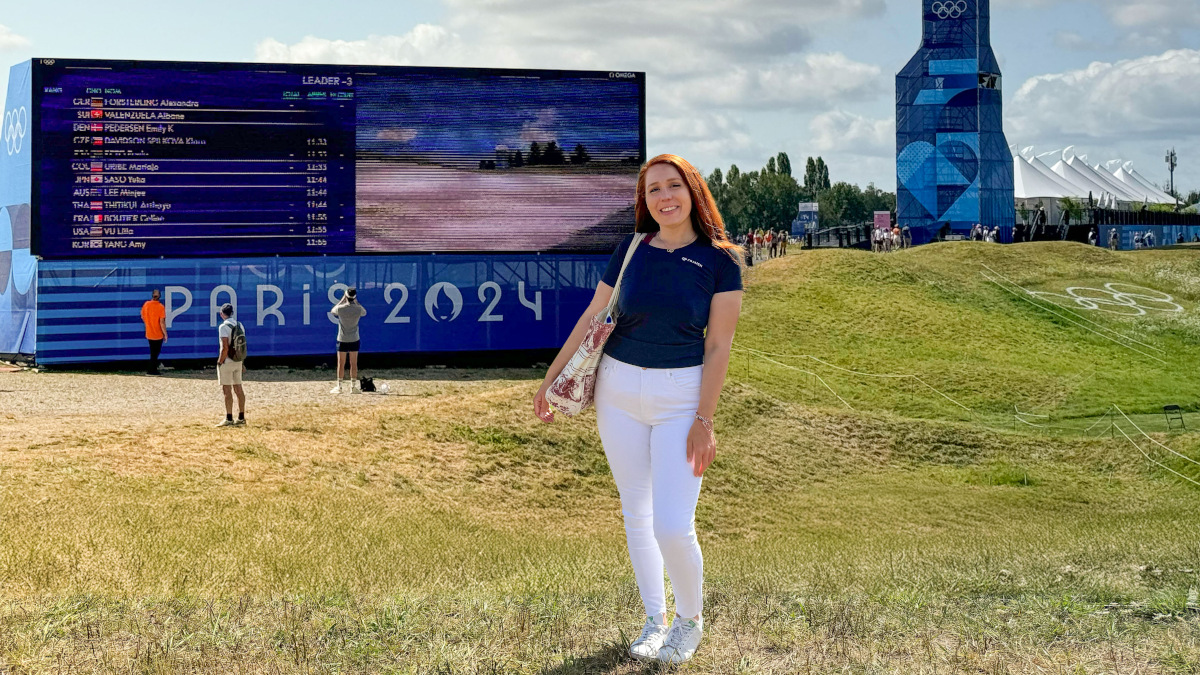The Olympic Games in Paris, with millions of spectators and hundreds of locations, could have been an ideal showcase for digital signage. Yet, Paris favored analogue alternatives. Here's a look at missed opportunities and lessons for future Games.

Paris Olympics 2024: Where was the Digital Signage?
The 2024 Paris Olympics were nothing short of spectacular, drawing in an impressive 11.5 million visitors. As a Paris local working daily from our French Framen office, located in a coworking space at the heart of it all, I had the privilege of attending several Olympic events, from gold-medal moments to the intensity of Olympic weightlifting. With my digital signage background, I’m sharing my firsthand experience at the Olympic Games.
About the author
Carrie Slayton is a marketing manager at Framen France, the Paris-based subsidiary of the Berlin DooH startup Framen. She supports Framen – part of Germany’s largest media house, Axel Springer – in its international expansion. For invidis, Carrie closely examined how digital signage is used at the Olympics 2024 in Paris.
Despite initial concerns as to whether Paris was adequately prepared, the city undoubtedly exceeded expectations. The city wasn’t overcrowded, public transportation worked efficiently, and there was no shortage of volunteers guiding attendees. Yet, amid all the excitement and the well-orchestrated logistics, there was something distinctly missing: digital signage.
Paris opted for a traditional approach to signage, relying heavily on physical banners, posters, and signs to guide the millions of spectators across the city. Taking into consideration the carbon footprint of such events, we expected a larger amount of digital signage solutions. The stops on metro maps were adorned with pink labels, clearly marking the stations closest to Olympic venues. Volunteers played a crucial role in directing foot traffic from these transit hubs to the events. However, the absence of digital signage was palpable, particularly inside the venues.
The digital screens that did exist were almost entirely dedicated to broadcasting live footage of the games or displaying scores. This left a significant gap in how information was communicated to attendees. Digital signage could have transformed the Olympic experience by serving multiple functions that static signage simply cannot match. Here’s how:
1. Security and Information
Digital signage can rapidly communicate security alerts, safety protocols, and real-time updates, ensuring the safety and well-being of all attendees. In an event as massive as the Olympics, having the ability to swiftly inform the public is crucial.
2. Directional Assistance
While volunteers were helpful, interactive digital maps and geo-located signage could have offered more precise guidance. For example, digital screens could have informed visitors that the nearest restroom was just 50 meters away, eliminating the need for printing thousands of directional signs. This would have minimized confusion, reduced paper waste and created a more seamless experience for attendees.
3. Live Scores and Game Information
Although scores and match information were displayed on some screens, there were many missed opportunities to keep fans engaged. Real-time updates on schedules, delays, or changes in events could have been more widely available, ensuring that attendees stayed informed even if they couldn’t make it to every game.
4. Ticketing and Merchandise
Digital signage could have also enhanced the ticketing process by facilitating resell options and directing fans to less crowded entrances, reducing congestion and potential security concerns. Additionally, it could have guided attendees to nearby merchandise stores, helping them secure exclusive Olympic memorabilia without getting caught in crowds.
5. Concessions and Dining
One of the standout missed opportunities was in concessions. At the Golf National, where I attended the morning events, I noticed that concession stands were mainly advertising barbecue options. However, there were very few people in line early in the day. With time-dependent digital signage, morning visitors could have been enticed with ads for croissants and coffee, shifting to burgers and fries later in the afternoon. This temporal flexibility could have driven sales and improved the overall dining experience.
6. Advertising Opportunities
For sponsors, digital signage offers dynamic advertising opportunities that static signs cannot. Brands could have created immersive and interactive campaigns that engaged audiences more effectively, creating memorable experiences that resonated long after the games were over.
7. Must-See Attractions and Connected City
Digital signage could have informed visitors about must-see attractions in Paris, integrating Olympic venues with the city’s rich cultural landscape. By connecting with city-wide information systems, digital signs could have provided a seamless blend of Olympic and Parisian experiences.
A bright spot was the use of digital screens during halftime of several events such as water polo and weightlifting, where screens displayed karaoke lyrics and encouraged the crowd to sing along—an excellent use of the technology that engaged the audience.
The Paris Olympics were a resounding success, but the absence of digital signage was a notable shortfall. This event serves as a learning experience for future Olympic hosts. The Los Angeles 2028 Olympics can take these insights and ensure that digital signage plays a central role in enhancing the overall experience, providing not just direction but also a richer, more engaging environment for all attendees.
By integrating the latest digital signage technology, future games can deliver an experience that is not just memorable but truly cutting-edge.
